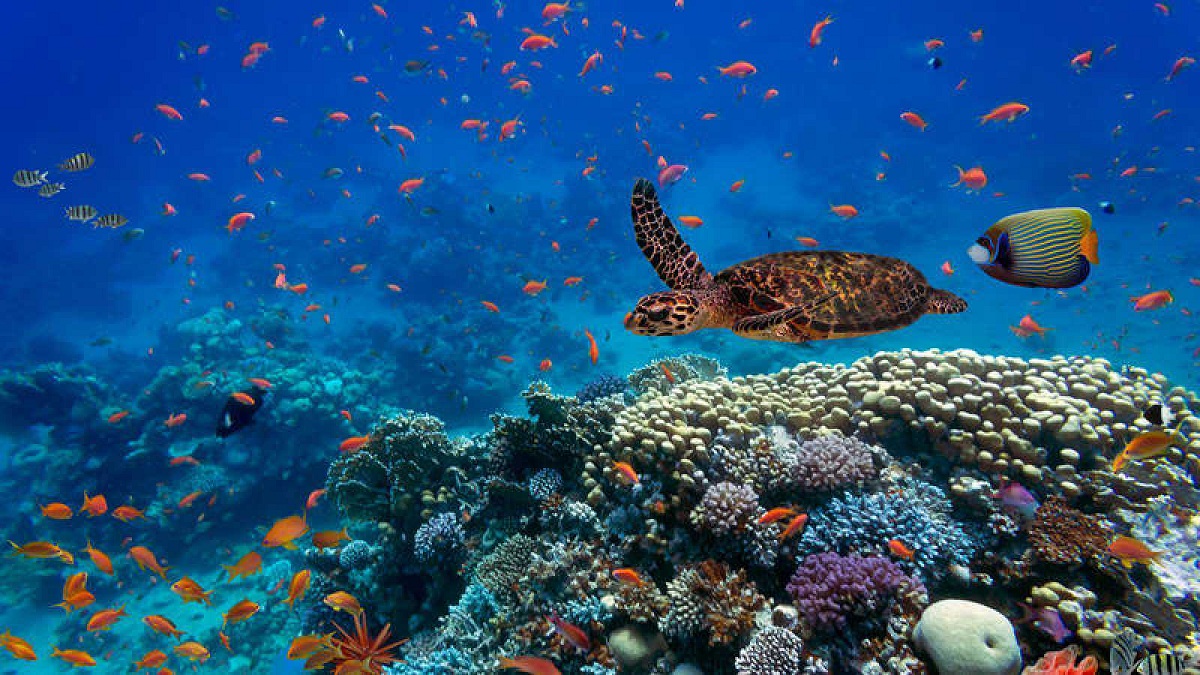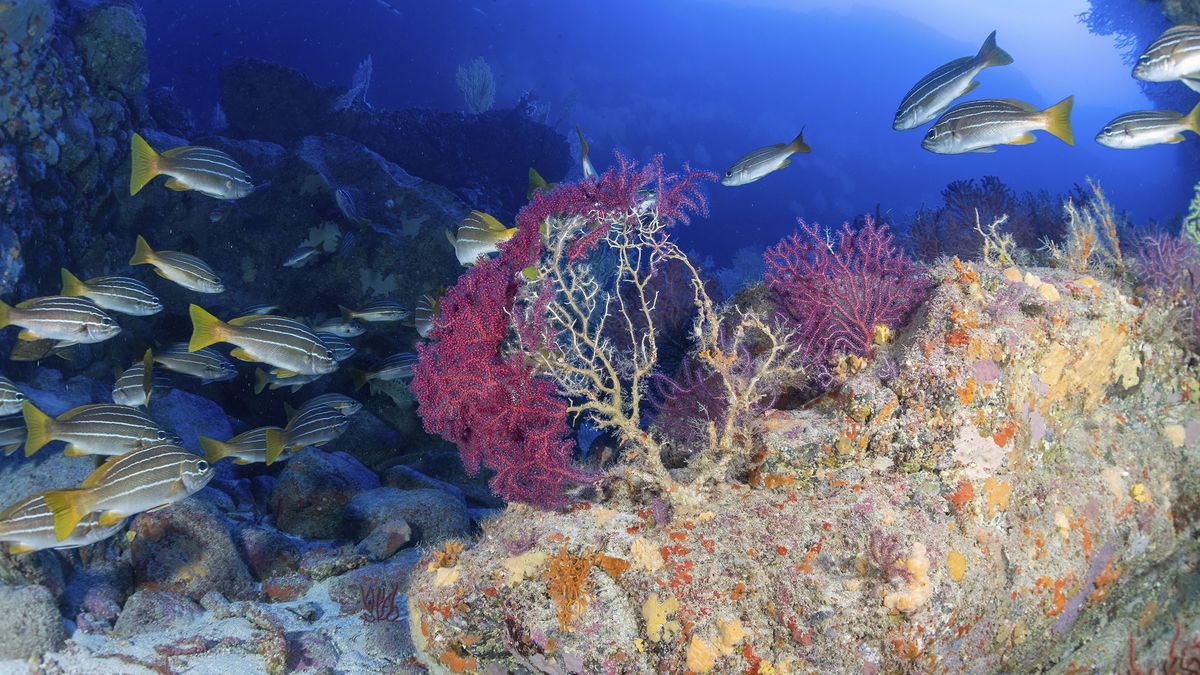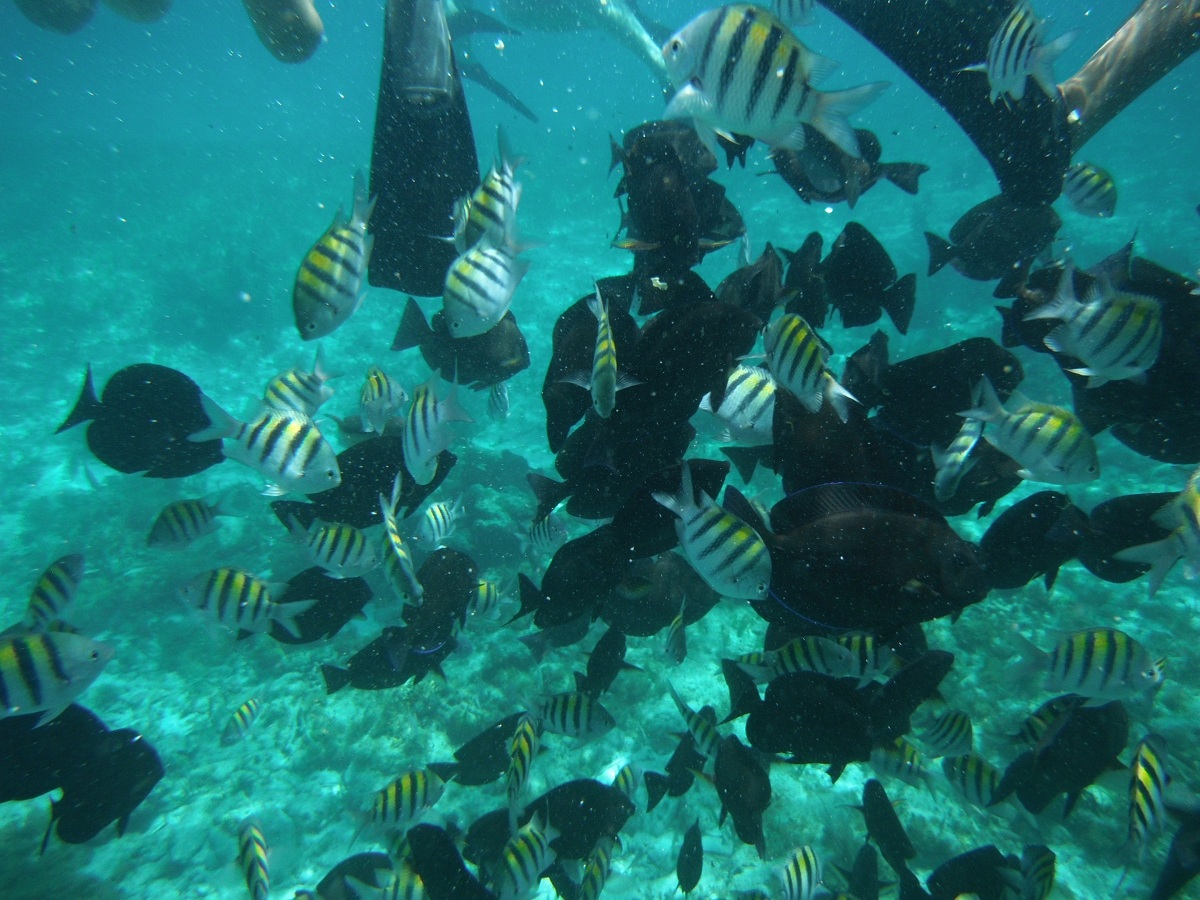
In nature there are different types of ecosystems according to their characteristics and the environment where they are found. One of the ecosystems is the marine one. Marine ecosystems are those that host a large amount of life and a diverse and gigantic source of biodiversity of plants, animals, microorganisms and molecules. Although the appearance of marine ecosystems It may seem homogeneous, it is one of the most heterogeneous ecosystems on the planet. It has different characteristics from the poles to the tropics throughout the world. There are millions of communities of living beings inhabiting these ecosystems and constitute places full of life.
In this article we are going to tell you about all the characteristics and importance of marine ecosystems.
What are marine ecosystems

The marine ecosystem is a kind of aquatic ecosystem, characterized by having salty water as its main component. Marine ecosystems include different ecosystems, such as seas, oceans, salt marshes, coral reefs, shallow coastal waters, estuaries, coastal saltwater lagoons, rocky shores, and coastal areas.
As we can imagine, a wide variety of marine ecosystems together support an astonishing diversity of plants and animals. In the next part we will see what marine plants and groups of marine animals make up the biodiversity of these ecosystems, and the main physical and chemical characteristics that define them.
Key features

The collection of all marine ecosystems occupies 70% of the earth's surface. Marine ecosystems are distributed in different biogeographic regions. They are included in the group of aquatic ecosystems. They are composed of water with dissolved salt as the main component. The density of salt water is higher than that of other freshwater aquatic ecosystems, which guarantees the survival of marine plants and animals that adapt to this high water density.
There are two types of areas, depending on whether they receive sunlight, to distinguish between bright areas and non-illuminated areas. The normal functioning of marine ecosystems depends largely on ocean currents, the functions of ocean currents are based on mobilizing and transporting various nutrients, so that the flora and fauna that inhabit these complex ecosystems can develop and survive.
Marine ecosystems are the source of enormous biological wealth, made up of different biological factors, such as production organisms (plants) and primary consumers (fish and mollusks), secondary consumers (small carnivorous fish) and tertiary consumers (large carnivorous fish). Size) and decaying organisms (bacteria and fungi). In turn, certain abiotic factors define the characteristics of these natural ecosystems, such as the temperature, salinity and pressure of its waters, and the amount of sunlight it receives.
Flora and fauna of marine ecosystems

Countless plants, including submerged and emerging species and floating species, make up the rich plant biodiversity of all marine ecosystems. Directly related to the physical and chemical characteristics of the types of marine ecosystems that inhabit, these species they will show some or other forms of life and will also have certain important needs.
Algae are an excellent flora of the marine ecosystem. A wide variety of families, genera, and species make the marine ecosystem teeming with life and color, and they are divided into the commonly known brown, red, or green algae. Some are microscopic (diatoms and dinoflagellates), while others are considered macroalgae, notably the giant stratified algae of the genus Macrocystis. Algae always adapt to the temperature and other physical and chemical characteristics of the waters where they grow and live, and are distributed in marine ecosystems in all regions of the world.
In addition to seaweed, the flora of marine ecosystems also includes several species of plants, including so-called seaweeds (ringed flower family, Cymodoceaceae, Ruppiaceae and Posidoniaceae), which are the only flowering plants in these ecosystems; mangroves (including mangroves: Rhizophora mangle and white mangroves: Laguncularia racemosa and other species) and abundant phytoplankton.
The oceans, coasts and other marine ecosystems constitute some of the most biologically diverse habitats in the world, animals of different groups, families and species coexist in a biological balance. Vertebrates and invertebrates large and small, just like microorganisms, they harmoniously coexist in the earth's marine ecosystem. These are the main types of fauna that we can find:
- Mammals We can find all kinds of whales such as the blue whale, the gray whale, sperm whales, orcas, dolphins ... etc.
- Reptiles: Such as sea snakes, the green turtle, the hawksbill turtle ... etc.
- Birds: Where we can find pelicans, seagulls, the sea cock, the osprey ... etc.
- Fishes: Here we can find all kinds and classification of fish such as parrot fish, puffer fish, surgeon fish, box fish, sergeant fish, damsel fish, stone fish, toad fish, butterfly fish, sole, angelfish, rays, sardines, anchovies, tuna …etc.
Types of marine ecosystems
- Wetland: It refers to the entrance of a bay or river where the salinity is lower than what we can find in the high seas. It can be said that it is an intermediate zone between salt water and fresh water. They are very fertile areas.
- Swamps: They are regions of salt water or lagoon. Land that absorbs water from oceans and rivers, the water is very calm and there is hardly any movement. As a habitat, it provides many resources for fish, different types of mollusks, and insects.
- Estuary: It is the estuary of the rivers of the coast, with changes in salinity, continuously receiving the Aguadulce river. The evil that we can find can be crabs, oysters, snakes and even me and many types of birds, as well as other species.
- Mangroves: They are forests that develop in the middle channel between the estuary and the sea. The main vegetation is a small forest adapted to brackish water. In the mangrove waters, we also have a great variety of fish, shrimp or a variety of reptiles, which use the trees as shelter or simply as food.
- Sea meadows: They are coastal waters with a depth of about 25 m, the waves are not very strong and the river carries almost no sediment. One of the main functions of seagrass beds is to prevent coastal erosion.
I hope that with this information you can learn more about marine ecosystems and their characteristics.